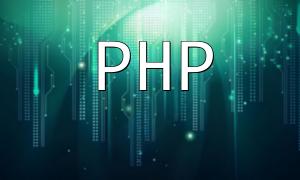Practicality and Challenges of Developing a PHP Product Management System
With the rise of digital commerce, product management systems have become a crucial part of enterprise IT infrastructure. PHP, known for its flexibility and robust functionality, is widely used in building such systems. This article provides a developer-focused overview of best practices for creating a stable, secure, and maintainable product management system using PHP.
Requirement Analysis and Functional Planning
Every development project should begin with a thorough analysis of user needs. Developers must collaborate closely with business stakeholders to define user roles, operational flows, and required features. Deliverables at this stage should include use case diagrams or detailed requirement documents to guide later development phases.
Efficient Database Structure Design
A well-structured database is key to system performance and reliability. Product management systems typically handle a large volume of data related to products, categories, stock, and orders. Key considerations include:
-
Clear table separation with minimal redundancy;
-
Use of foreign keys to maintain data integrity;
-
Proper indexing to enhance query speed;
-
Scalable structure to support future growth.
Modular Development with MVC Architecture
The MVC (Model-View-Controller) pattern promotes separation of concerns and better maintainability.
-
Model: Manages data interactions with the database;
-
View: Renders user interfaces, often with templating engines;
-
Controller: Handles user inputs and processes business logic.
MVC makes team collaboration easier and supports clean, modular code architecture.
Security Considerations: A Top Priority
E-commerce platforms process sensitive commercial and user data. As such, developers must actively defend against common web vulnerabilities:
-
Use parameterized queries or ORM to prevent SQL injection;
-
Escape user input to avoid cross-site scripting (XSS);
-
Implement CSRF tokens to mitigate cross-site request forgery;
-
Use captchas or multi-factor authentication on login endpoints.
Performance Optimization for Better User Experience
High traffic and data operations demand efficient performance. Recommended optimization strategies include:
-
Implement Redis or similar caching to reduce DB load;
-
Use CDN services to accelerate static content delivery;
-
Apply asynchronous processing for improved API response times;
-
Optimize server and database configurations to minimize latency.
Testing and Debugging for Quality Assurance
Robust testing is essential before deployment. The following approaches are highly recommended:
-
Unit Testing: Validates individual logic components;
-
Integration Testing: Verifies interactions between system modules;
-
Performance Testing: Measures load handling capabilities;
-
Combine manual testing with debugging tools for maximum reliability.
Documentation and Ongoing Maintenance
Sustainable development relies on thorough documentation. Key documents should include:
-
Database schema descriptions;
-
API references (e.g., OpenAPI or Postman formats);
-
Functional module overviews;
-
Deployment and upgrade instructions.
Well-prepared documentation enables smooth team transitions and long-term maintainability.
Conclusion
By following structured development practices—from requirement gathering and architecture planning to security hardening and system testing—PHP developers can build efficient, scalable, and secure product management systems tailored to the needs of modern online stores.









